In This Article
This post may contain affiliate links, please see our privacy policy for details.
If you're an espresso aficionado or simply a coffee lover stepping into the world of espresso, you know the joy that comes with sipping a perfectly pulled shot. It's that magical potion that can kick-start your mornings or provide a comforting mid-afternoon pick-me-up. However, there's one crucial element that has a significant impact on your cup's quality, flavor, and overall experience — the espresso beans.
Yes, the art of crafting an exceptional espresso begins long before your coffee reaches the espresso machine. It starts at the very core of the process, the coffee beans. But these aren't just your regular coffee beans; these are espresso beans, the superheroes of your morning ritual.
What Are Espresso Beans
Espresso beans are essentially coffee beans that have been specifically grown, harvested, processed, and roasted for the purpose of making espresso. Contrary to common belief, it's not a particular type of bean but rather the degree of roast and grind level that often determines its categorization for espresso. The proper choice of espresso beans can dramatically affect the aroma, flavor, and creaminess of your espresso, hence their importance.
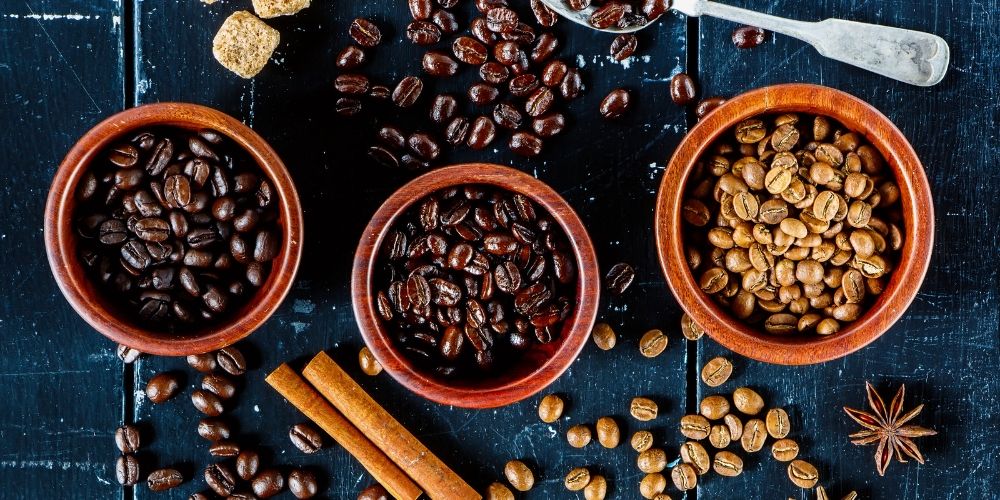
As we delve into this topic, remember, every coffee enthusiast's journey is unique. There's an entire world of espresso beans to explore, each with its own character, flavor profile, and charm. And who knows? Your perfect espresso bean might just be a blog post away!
Don't forget to check our other related blog posts, such as How to Make an Espresso, which guides you step by step in crafting the perfect shot, or Coffee & Espresso Maker Combos a comprehensive review to help you find the best equipment for your brewing needs. You might also enjoy our deep-dive into Espresso Coffee Beans, where we uncover the best coffee beans and their benefits.
Stay with us as we embark on this caffeinated journey to find the perfect espresso beans. Let's dive in!
Arabica vs Robusta
Coffee's rich flavors and diverse aromas originate from two main types of coffee beans: Arabica and Robusta.
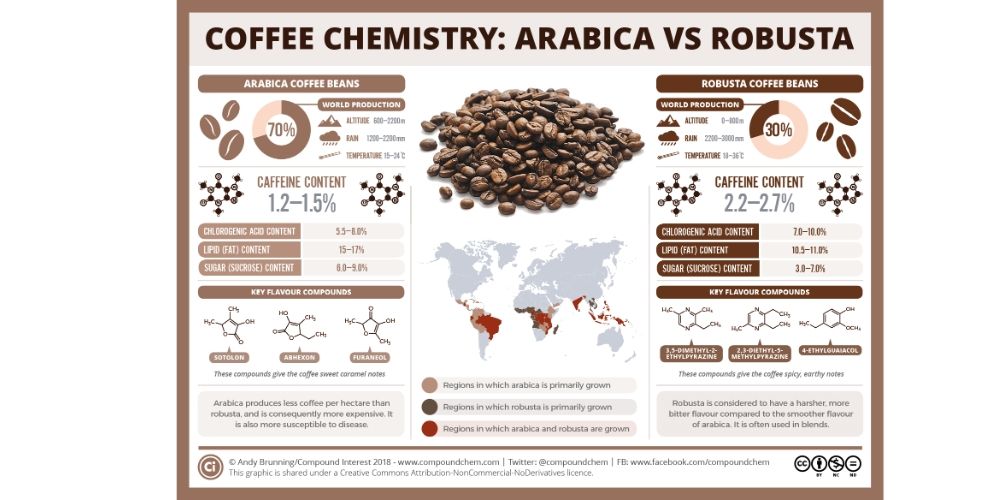
Arabica Beans
Arabica beans, formally known as Coffea Arabica, are highly regarded for their superior taste and quality. Originating from Ethiopia, they're now cultivated globally. Arabica beans yield a broad flavor spectrum, from sweet and mild to sharp and tangy, often with notes of sugar, fruit, and berries. Despite their delightful taste, they contain less caffeine than Robusta, approximately 1.2% to 1.5%.
Robusta Beans
Robusta beans, or Coffea Canephora, are known for their resilience and higher caffeine content. Native to sub-Saharan Africa, these beans have a robust, earthy flavor, often with hints of chocolate and nut. They pack nearly double the caffeine punch of Arabica, containing around 2.2% to 2.7%.
Understanding these two bean types is crucial when selecting espresso beans. While Arabica is often preferred for its nuanced taste, high-quality Robusta can also yield excellent espresso, especially in blends. The choice between Arabica's smooth taste and Robusta's intense kick largely depends on your personal preference.
What Type of Coffee Beans for Espresso
The choice of espresso coffee beans is largely dependent on personal preference, but some regular beans are widely recognized as suitable for espresso, based on their flavor profiles, body, and acidity. A variety of beans can contribute to the bold flavor that defines the espresso taste. When searching for the best espresso coffee beans, it's important to consider both the type of bean and the roast level.
Arabica beans, known for their complex, full-bodied flavor and low acidity, are often considered the best espresso beans. On the other hand, Robusta beans, with their stronger, more bitter taste and higher caffeine content, add a kick to the espresso blends.
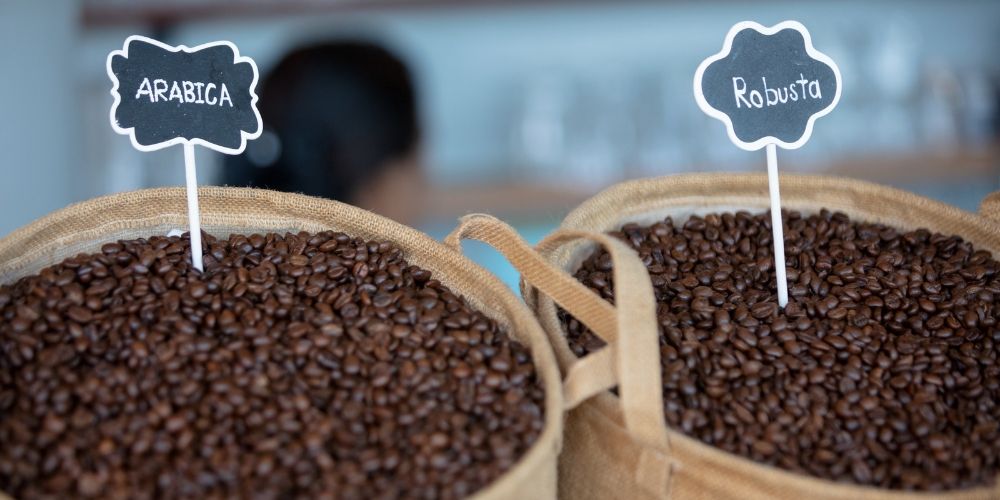
A blend of Arabica and Robusta is frequently used in espresso roast, leveraging the complex flavor of Arabica and the robust nature of Robusta to create a balanced espresso blend. Freshly roasted coffee beans of these types are often preferred for a richer flavor.
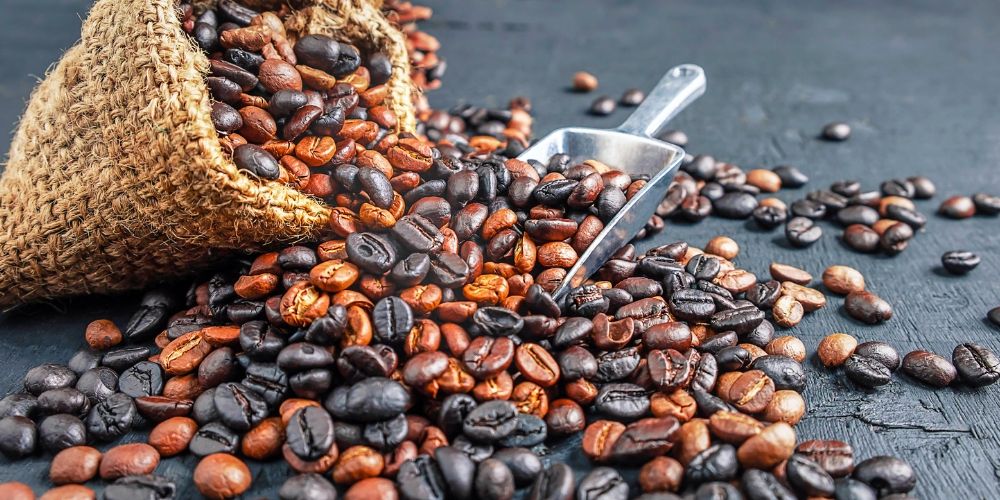
Dark roast coffee is typically used for espresso due to its bold, robust flavor profile that can stand up to the intensity of the espresso brewing process. A dark roast, or sometimes a medium dark roast, is ideal for drawing out flavors that pair well with the concentrated, punchy nature of a straight espresso shot.
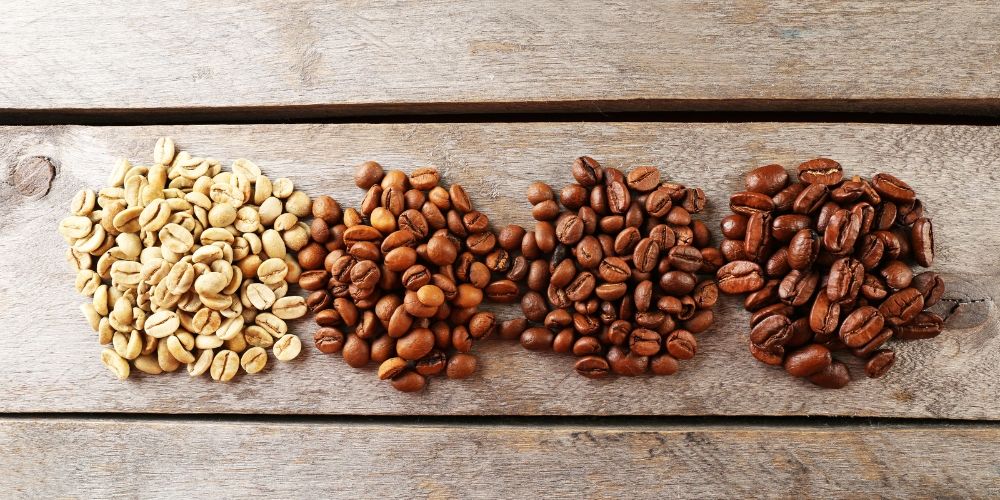
However, the world of espresso is not limited to just Arabica and Robusta. Other different beans such as Liberica and its variety, Excelsa, offer unique taste profiles. Liberica beans provide a smoky, woody taste, while Excelsa beans, though rare, contribute a tart, fruity, and complex flavor. While these beans are less common, they could potentially be used in an espresso blend for a distinctive taste.
What Roast Is Best for Espresso
Espresso's distinctive flavor is heavily influenced by the roast type. Traditionally, a darker roast, known for its bold, rich flavor and abundant 'crema', is chosen for espresso. The high-pressure espresso brewing technique works exceptionally well with dark roast ground coffee, extracting its intense flavor efficiently.
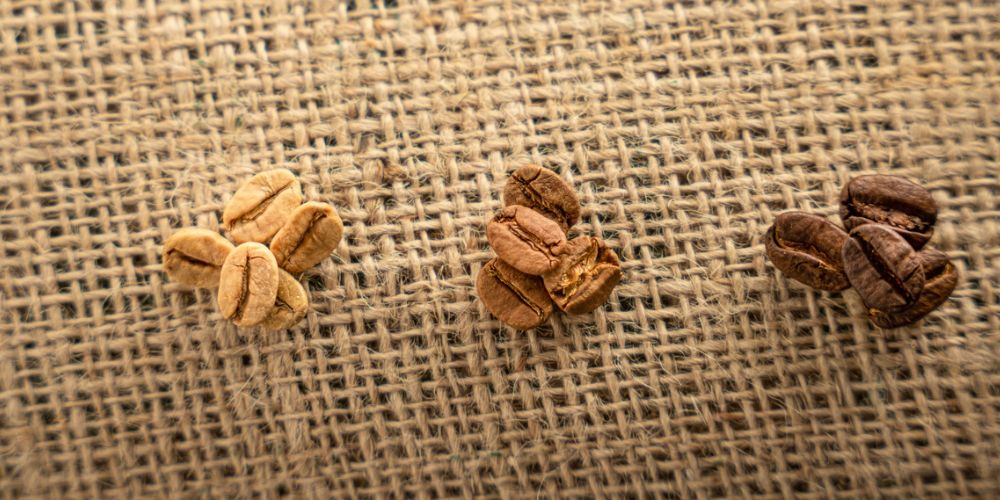
However, the taste is subjective, and both media to medium-dark roasts and even lighter roasts find favor with some espresso lovers. Medium-dark roasts strike a balance between showcasing the bean's natural flavors and the rich caramelization from roasting. Lighter roasts, appreciated in the "third wave" coffee movement, can yield a complex, bright espresso shot with fruity undertones.
The best roast for espresso ultimately comes down to personal preference. Experimentation with different roasts and freshly roasted beans can lead you to discover your perfect espresso blend. Whether you lean towards the boldness of a darker roast or the subtleties of a lighter one, there's an espresso roast to suit every palate.
How to Choose Espresso Beans
Finding an affordable yet delicious espresso bean blend can be a challenging task, but with some guidance, you can discover your perfect match. Here are some key factors to consider when selecting an espresso bean blend:
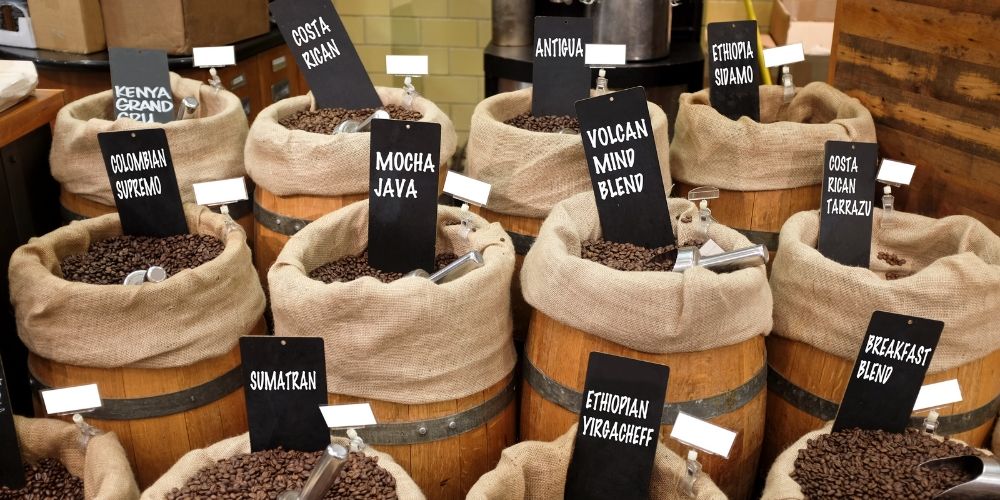
Bean Type
Espresso can be made from different types of coffee beans, including Arabica, Robusta, Liberica, and Excelsa. Arabica and Robusta are the most popular and widely available.
Roast Level
Espresso is traditionally made with a dark roast to bring out a bold and robust flavor. Medium-dark roasts can also be used for a slightly lighter flavor profile.
Blend or Single Origin
You can choose between blends, which combine beans from multiple locations, or single origin, which come from one specific region or farm. Blends are often designed for balance and consistency, while single origin beans can provide unique and complex flavor profiles.
Freshness
Coffee is at its best soon after it's been roasted. Look for beans that have been roasted within the last two weeks for the freshest flavor.
Grind Size
If you're buying whole beans, remember that the grind size is crucial for espresso. It should be fine but not too powdery to allow for proper extraction.
Tasting Notes
Pay attention to the tasting notes on the coffee packaging. These will give you an idea of the flavors you can expect from the beans. This can help guide you towards beans that align with your personal flavor preferences.
Personal Preference
Ultimately, the best espresso beans for you will depend on your personal taste. Don't be afraid to experiment with different beans, blends, and roast levels to find what you enjoy the most.
Ethical Considerations
If sustainability and fair trade are important to you, look for certifications on the packaging. This can help ensure that the beans were grown and harvested under ethical and environmentally friendly conditions.
By considering these factors, you can navigate the world of espresso beans more effectively. Take your time, experiment with different brands and blends, and ultimately find the affordable yet delicious espresso bean blend that satisfies your taste buds.
Choosing an Espresso Machine
Scouring the market for that perfect espresso machine can seem like quite the challenge! But, who said you had to do it alone? To help you make the best choice, we've brewed up a detailed guide that demystifies the top 10 Coffee & Espresso Machines on the market. What's your flavor? Beginner-friendly machines that are gentle on your wallet or high-end models that come decked out with every feature you can dream of? This guide uncovers it all, helping you spot the machine that sings in harmony with your coffee desires.
Discover more coffee bliss with our enticing Coffee Series: Coffee Maker with Grinder, Iced Coffee Makers, Small Coffee Makers, Coffee & Espresso Maker Combos & Manual Coffee Makers
Now, you might be thinking, "What if I'm not quite ready to own an espresso machine, or what if I'm more into the hands-on fun of manual brewing?" Hey, no problem at all! We've thought of you too. We've poured our knowledge into an insightful blog post titled How to Make an Espresso: 2 Distinct Ways to a Perfect Cup. Here, we unlock various techniques and tools that empower you to conjure up a superb cup of espresso, minus the sophistication of an espresso machine.
Immerse yourself in the invigorating world of espresso coffee with our specially curated selections. Unleash your inner barista with our guide on How to Make an Espresso, Coffee & Espresso Maker Combos, Espresso Coffee
And if you find the art of manual brewing just as invigorating as that first sip of coffee in the morning, our post, 11 Manual Coffee Maker Machines to Suit Every Lifestyle, is something you'll absolutely love. This treasure trove of information dives into the world of manual brewing contraptions, from the no-frills French press to the classy Chemex, and the sturdy AeroPress. Every method is a unique adventure with its own rewards and brewing rituals, perfect for those who find joy in the artisanal touch of manual brewing.
Discover more cold brew coffee picks with our enticing Cold Brew Series: What Is Cold Brew Coffee, Cold Brew Coffee Makers, Manual Coffee Makers
So, whether you're a greenhorn just stepping onto the espresso trail, a coffee savant looking to spruce up your brewing arsenal, or a manual brewing fanatic eager to hone your craft, our guides, and blog posts are your perfect brew buddies. Here's to brewing that impeccable cup of espresso, time and time again!
Espresso Beans FAQ
Can I use light roast coffee for espresso?
Absolutely, you can use light roast coffee for espresso. It will produce a more acidic, nuanced, and brighter flavor compared to darker roasts.
Can I use dark roast beans for espresso?
Yes, you can use dark roast beans for espresso. In fact, dark roast is traditionally used for espresso due to its bold flavor and low acidity.
Can you use French roast for espresso?
Yes, you can. French roast refers to a type of roast that's darker than the traditional espresso roast, resulting in beans with a shiny, oily surface. This roast produces a strong, smoky, and slightly bitter flavor profile that some coffee lovers enjoy. It's all a matter of personal taste. Remember, the key to a great espresso lies in the freshness of the beans and the precision of the brewing process.
Are espresso beans and coffee beans the same?
Espresso beans and coffee beans are the same in that they both come from the same plant. The difference is in the roasting process. Espresso beans are generally roasted longer than coffee beans, resulting in a darker roast that brings out more flavor when brewed under pressure.
How long are espresso beans good for?
Espresso beans, like other coffee beans, are generally good for up to a month after opening if stored properly. For the best flavor, however, it's recommended to use them within one to two weeks.
What is the best coffee for espresso?
The best coffee for espresso often comes down to personal preference. However, a high-quality Arabica bean with a medium to dark roast is commonly preferred for its balance of sweetness and acidity.
Is espresso bitter?
Espresso can have a slight bitterness to it, but it shouldn't be overwhelmingly bitter. This bitterness is often a result of the dark roast commonly used for espresso. However, when brewed correctly, an espresso should have a balance of flavors, including sweetness, bitterness, and acidity.
How to make perfect espresso?
Creating the perfect espresso involves several factors such as using fresh, high-quality beans, having the right equipment, and following the correct brewing process. For a detailed guide on how to achieve this, do check out our informative blog post titled "How to Make an Espresso." It provides a step-by-step method to help you brew the perfect cup every time.
Final Thoughts
The world of espresso beans is as rich and varied as the beverage itself. Whether you're new to espresso or a seasoned connoisseur, understanding the various types of beans and how to choose the right ones can significantly enhance your coffee experience. But don't stop there! Continue your coffee exploration by diving into our Iced Coffee Series for a cool twist on your favorite brews, the Cold Brew Series for a low-acidity, smooth coffee experience, and our Easy Coffee Drinks to Make at Home for creative and delicious ways to enjoy coffee at home. Because with coffee, there's always something new to learn, taste, and enjoy! Here's to your next perfect cup.
Discover iced coffee bliss with our enticing Iced Coffee Series: What is Iced Coffee, How to Make Iced Coffee, Iced Coffee Makers, Iced Coffee Tumblers, Protein Iced Coffee Recipes, Coffee Ice Cream, Thai Iced Coffee, Japanese Iced Coffee, French Vanilla Iced Coffee, Caramel Iced Coffee, Iced Cappuccino, Vietnamese Iced Coffee, Pumpkin Spice Iced Coffee, Keto Iced Coffee, Coffee Protein Shake










